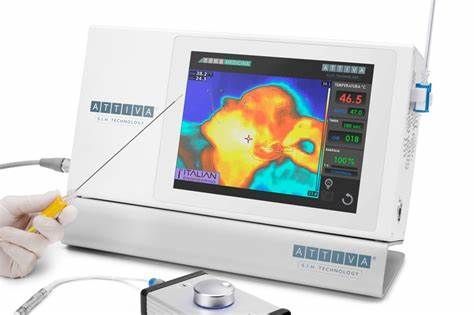Achieving Timeless Beauty:
The Art of Minimally Invasive Cosmetic Procedures
ATTIVA RF: A Comprehensive Comparison with Other Skin Tightening Modalities

Introduction:
In the pursuit of youthful, firm skin, there are various modalities available, each offering unique benefits and considerations. Attiva RF is a non-invasive skin tightening treatment that uses radiofrequency technology to stimulate collagen production and improve skin elasticity. In this guide, we'll compare Attiva RF with other skin tightening modalities, exploring their pros, cons, risks, benefits, and identifying ideal candidates for each.
Attiva RF:
- Pros: Attiva RF is non-invasive, painless, and requires minimal downtime. It stimulates collagen production, resulting in firmer, tighter skin over time. It can be used on various areas of the body, including the face, neck, arms, and abdomen.
- Cons: While Attiva RF is generally safe, mild redness, swelling, or discomfort may occur following treatment. Multiple sessions may be needed to achieve optimal results.
- Risks: Rare risks of Attiva RF include burns, blistering, or changes in skin pigmentation. These risks are minimized when the treatment is performed by a qualified practitioner.
- Benefits: Attiva RF provides gradual improvement in skin laxity and texture, with results lasting up to a year or more. It is suitable for individuals with mild to moderate skin laxity who prefer non-surgical options.
Comparison with Other Modalities:
- Ultherapy:
- Pros: Ultherapy uses ultrasound energy to lift and tighten the skin. It targets deeper layers of tissue, providing long-lasting results.
- Cons: Ultherapy can be uncomfortable, and results may take several months to fully manifest. It is more expensive than some other options.
- Ideal Candidates: Individuals with moderate to severe skin laxity who are willing to tolerate temporary discomfort for significant improvement.
- Fractional Laser Resurfacing:
- Pros: Fractional laser resurfacing improves skin texture, tone, and tightness by stimulating collagen production and promoting skin renewal.
- Cons: Recovery time can be longer compared to other modalities, with potential side effects such as redness, swelling, and peeling.
- Ideal Candidates: Individuals with mild to moderate skin laxity and concerns about skin texture and tone.
- Thermage:
- Pros: Thermage uses radiofrequency energy to heat deep layers of skin, stimulating collagen production and tightening loose skin.
- Cons: Results may vary, and multiple treatments may be needed for optimal improvement. Some discomfort during treatment is common.
- Ideal Candidates: Individuals with mild to moderate skin laxity who prefer a non-invasive treatment option.
Ideal Candidates for Attiva RF:
- Individuals with mild to moderate skin laxity and early signs of aging.
- Those seeking a non-invasive, comfortable treatment with minimal downtime.
- Patients looking for gradual, natural-looking improvement in skin tightness and texture.
- Individuals who are not candidates for or prefer to avoid surgical procedures.
Conclusion:
Attiva RF offers a safe, effective, and non-invasive solution for improving skin laxity and firmness. By understanding its pros, cons, risks, and benefits, along with comparing it to other skin tightening modalities, individuals can make informed decisions about their skincare treatments and achieve the desired results. Always consult with a qualified practitioner to determine the most suitable option for your unique needs and goals.

